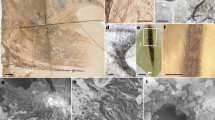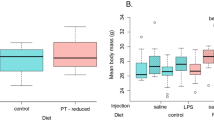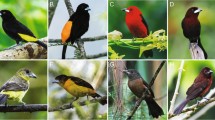Abstract
THERE are some distinct structural differences between the feathers of the ‘Dominant Grey’ budgerigar and those of other races. In the wild coloured form the feathers of the lower abdominal region show in transverse section a somewhat triangular outline, and the vacuoles are arranged along the median axis of the section (see Fig. la). In the grey bird, the outline appears rounder, and the medulla of the barb is composed of a larger number of relatively small cells, the vacuoles occupying more or less the central parts of the cells and appearing therefore more equally distributed (see Fig. 1b).
This is a preview of subscription content, access via your institution
Access options
Subscribe to this journal
Receive 51 print issues and online access
$199.00 per year
only $3.90 per issue
Buy this article
- Purchase on Springer Link
- Instant access to full article PDF
Prices may be subject to local taxes which are calculated during checkout
Similar content being viewed by others
References
“Vererbungsstudien am Wellensittichâ, Zurich, 133 ff. (1932).
J. Sci. Hiroshima Univ., Ser. B/1, 3, 149 (1935).
Author information
Authors and Affiliations
Rights and permissions
About this article
Cite this article
AUBER, L. The Colour-Producing Structure in the ‘Dominant Grey’ Budgerigar. Nature 144, 157–158 (1939). https://doi.org/10.1038/144157a0
Issue Date:
DOI: https://doi.org/10.1038/144157a0
Comments
By submitting a comment you agree to abide by our Terms and Community Guidelines. If you find something abusive or that does not comply with our terms or guidelines please flag it as inappropriate.



